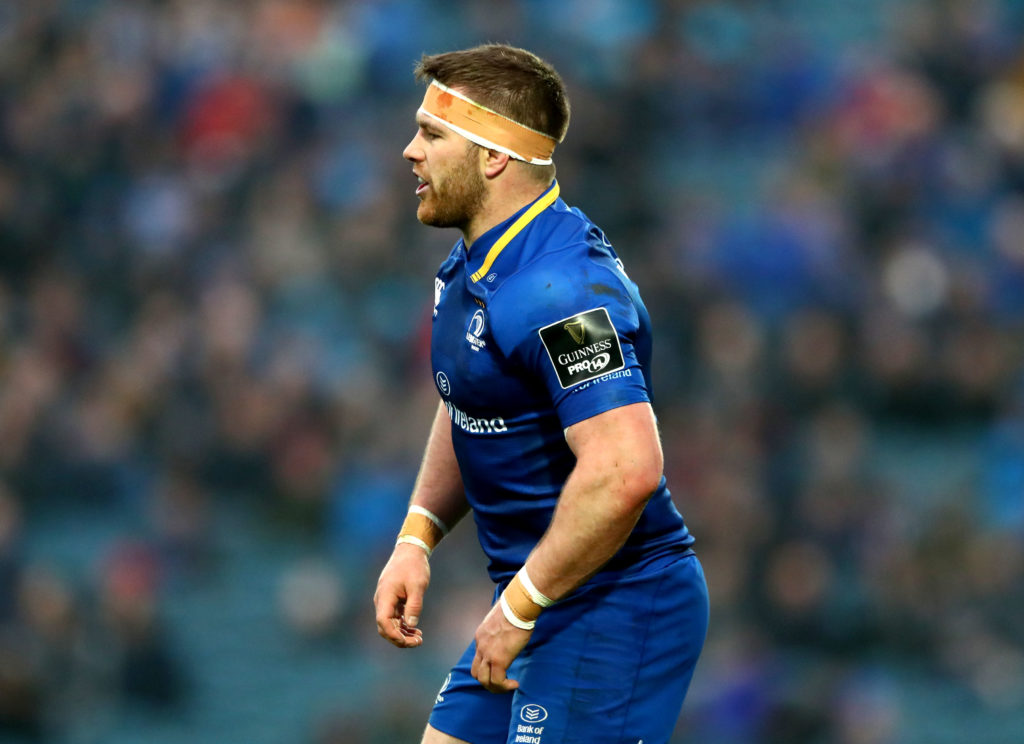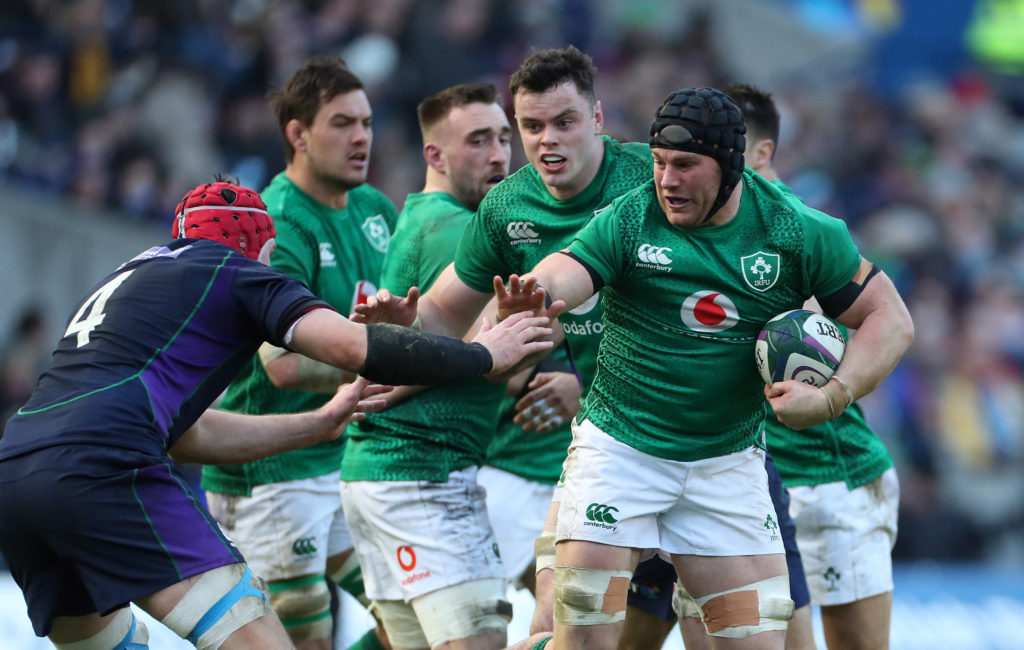Sean O’Brien is one of those “force of nature” type of players. One of those guys that you see on the opposition team sheet and think, fuck it, we’re in for a tough day at the office here.
At his very best, O’Brien is borderline unplayable and pretty much has it all, bar a lineout game.
He’s a monster tackler, he’s technically excellent on the floor and his ball carrying – good god, his ball carrying – is world class, and I mean that in the truest sense of the term.
O’Brien took the Irish #7 shirt and continued the 7.5 style game Since he debuted for Leinster in 2008, O’Brien has been a top drawer operator for his province, Ireland and the Lions. Quite simply, when he’s fit and firing, he is a phenomenon.

And it’s not just his on-field work that was important. For Leinster, I genuinely think that he was a big builder of their success in moving beyond the “D4 stereotype”.
He’s a Carlow farmer – and looked and sounded every inch of it – and just loved playing and winning for Leinster. That kind of thing is important in building an inclusive “brand” (I know, gross, but stay with me) and in that regard,
Sean O’Brien was invaluable to Leinster in a way that can’t really be fully measured. And next season, he’s off to London Irish.
On the face of it, it’s a massive loss for Irish rugby. But then you look at the details that make it the best possible result for Ireland, Leinster and, indeed, Sean O’Brien.
I suppose it’s wholly possible that Irish rugby will regret Sean O’Brien being out of the system in a year or two. I don’t think so, though.
Don’t get me wrong, Sean O’Brien is an outstanding player – as I’ve detailed above – but at a certain point a sports organisation has to make tough decisions on players as they begin to “age out”.

Sean O’Brien is going to turn 32 this week and generally, when it comes to ball carrying forwards, the attritional nature of that role affects them incrementally more as they head into their mid 30’s.
From the IRFU’s perspective – they were negotiating with O’Brien in this instance, as he was centrally contracted – they had a number of questions to consider as they prepared the ground for this contract negotiation.
Do we want to retain Sean O’Brien? If yes, how much are we willing to pay him relative to what he’s already earning and for how long?
Given his age and injury record, how much value will we get from the lowest offer that O’Brien will accept from us given that we will have to offer him something?
The IRFU would have to be seen to offer O’Brien a contract given his status in the game and what he’s achieved for Ireland and Leinster but, in reality, any contract the IRFU would look to offer would be two years – at an absolute maximum – with a reduction in contract value from where he is currently.
From O’Brien’s perspective, at 32 years of age and the end of your career approaching, you look for as much value and security as you can get.
When London Irish were offering the £££ and a fair bit of time (three years), there was little chance that the IRFU would look to match it and – just my own opinion – they may have been a little relieved.

Having Sean O’Brien off the central wage structure will free up some wage capital for the IRFU as they head into next season and the start of a new four year cycle.
Sean O’Brien being on the books won’t make or break the system but every little helps in this environment. In some ways, it’s similar to Paul O’Connell being allowed to leave his contract early to head off to Toulon ahead of Rugby World Cup 2015.
Ultimately, expensive players in their mid 30s are only as valuable as how much you can reasonably expect to get out of them in the time they’ll accept being contracted.
Jamie Heaslip, to give one example, signed a two year deal in 2017 aged 33 that would end after this World Cup.
Sounds crazy, right? And maybe it was. But the thinking behind it was solid. Heaslip had a fantastic injury record up to that point, looked after himself excellently and would be a valuable asset to both Leinster and Ireland (in so far as performance on and, increasingly, off the field).
Heaslip had been on a sponsor top up on the previous contract but was solely union funded for this one so we can make a fair assumption that the value of the contract dropped – although I’m speculating quite a bit there.

That made sense for the union and for the player. Now, it just so happened that Heaslip was forced to retire a short time later due to a back injury but the thinking at the time of the contract offer was sound.
Experienced, durable player getting signed for less money (we assume) and will retire after the next World Cup.
O’Brien’s contract, and the thinking behind how much and how long the IRFU would offer, would be quite different.
Just from a Leinster perspective, Sean O’Brien has started just 21 games for Leinster since the start of the 2015-16 season and that’s entirely down to a series of injuries.
Johnny Sexton has had his game time heavily managed for Leinster since his return from Racing 92 and he has started 43 games in the same time period.
Sean O’Brien played 13 times for Ireland since 2015. In the same period of time, Peter O’Mahony has played 19 games for Ireland and that includes a solid year out of the game through a serious knee injury from 2015.
So any offer to O’Brien would have to take value for money per actual appearance into consideration given his injury record over the previous four years.

If you signed O’Brien to a two year deal, how much of that time would you reasonably expect him to be fit and available?
It’s a tough question to ask but it would still have to asked. If it’s even 50% better than the last four years, you’d still think twice about how much and how long you’d offer.
From a player succession stand point, O’Brien’s move to London Irish also makes a lot of sense for Leinster and Ireland.
Had he stayed and, say, signed a two year deal at 70% of his current value and then managed to stay fit, the effect on Leinster’s back row succession plans would be profound.
If you’re Leo Cullen and Stuart Lancaster, a fit and firing Sean O’Brien is someone who would start most games for most teams on the planet so that’s one jersey and one option that would be blocked off in top level games.
If you start Sean O’Brien at 7, where does that leave Josh Van Der Flier? Do you move him to #6?
Where does that leave Dan Leavy? Does he bench? Or do you bench Van Der Flier? If you start O’Brien at #6, who do you start at #7 and where does Rhys Ruddock – one of Leinster’s legitimate backrow lineout options – fit in?
If O’Brien plays at #8, where do you put Jack Conan? Does he just drop out of matchday 23s?
And that’s before you get to high potential young lads Max Deegan, Caelan Doris, Scott Penny and whoever else they have coming up the track.
How long before some of that talent – from Leavy on down – decides that they’d be better served seeking gametime elsewhere, as Jordi Murphy did?

Jordi Murphy went from a fill player when guys are injured to being a key part of Ulster’s back row and, regardless of what shirt you wore when you were 9 years old, professional players want to be involved in the big games as a key part.
With O’Brien in England, there is incrementally more opportunity for Leinster to develop new front line players and create greater depth than they would be able to with O’Brien in their squad.
Sure, you could rotate O’Brien out but then that relates back to how much you’re paying a guy to be a rotated senior player.
How much that is actually worth to you as an organisation when you already have proven, younger talents like Van Der Flier and Leavy playing for both Leinster and Ireland in the #7 shirt to a top drawer standard?
Not every move away is a bad move for Ireland. Sometimes it creates space for other players to grow and, when you look at how New Zealand operate when it comes to certain senior players, it seems like the sensible option for all concerned. Best of luck to O’Brien at London Irish.









